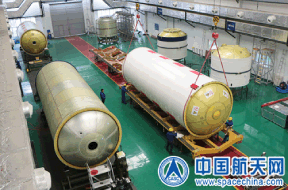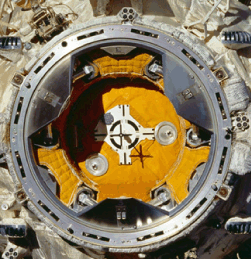Space industry conferences come in all shapes and sizes. As someone who has spent most of my career covering the commercial and government satcom industry, most of the conferences I attend are more commercial in nature—discussion tends to focus on business plans that are already in existence, or otherwise, on the horizon. This year, for the first time, I was fortunate enough to be invited to the 8th CSA-IAA Conference on Advanced Space Technologies, a conference held every two years in Shanghai, and hosted by the Chinese Society of Astronautics (CSA), the International Academy of Astronautics (IAA), and the Shanghai Academy of Spaceflight Technology (SAST).
The conference held from 3-5 Septetember featured a number of academic talks about conventional space industry topics (mine was on LEOs vs. GEOs in HTS, for example), but also hosted some talks on, as the conference name would suggest, advanced space technologies, and other, more out-there topics. The conference week was wrapped up with a Friday site visit to co-host SAST, which proved to be one of the highlights of the week.
China on the Move
One of the most interesting talks throughout the conference was one given by Zong Wenbo, the Secretary of the Party Committee and Vice President of SAST. Among other things discussed was a layout of a 30-year plan for Mars, which would involve a “small base, livable home” on the red planet by as soon as 2036, as shown at right. The “Mars Environment-Friendly Project”, as described by SAST, will be undertaken by the broader CASC organization, given the project’s size and scope, and has an objective of “focusing on major scientific issues such as artificial intelligence, origin and evolution of life, exploration of extraterrestrial life, and livability of extraterrestrial objects….to build Mars into an environment-friendly and harmonious home for human habitation”.
In addition to Mr. Zong’s speech, Zhou Hui of the China National Space Administration provided an overview of the Belt and Road Spatial Information Corridor, a long-term project by China to develop the space infrastructure along the Belt and Road countries (basically all of Eurasia and Africa plus others). The Spatial Information Corridor includes short, medium, and long-term goals, which can effectively be characterized as building China’s space capabilities through export to BRI countries, while also helping the BRI countries develop their own nascent space programs, and eventually, have some exchange of talent between these regions.
Ms. Hui highlighted several major tasks for the next five years, including developing three major satellite systems of remote sensing, communication, and broadcast, as well as building a space-ground integrated information network. While very different in terms of content (one being interplanetary, the other being multinational), Mr. Rong and Ms. Hui’s two speeches provided insight as to China’s long-term space ambitions, and were two of the more interesting speeches at the conference.
Other speeches included several by foreign dignitaries, including a speech on property rights in space (we need them), as well as speeches on various industrial materials and their properties. Another highlight of the conference was the translation technology used. For both English and Chinese speakers, the conference had both human interpreters and an AI interpreter. The human interpreters were, as is normally the case, speaking into earpieces, but the AI interpreter was listening, and then typing the translated text on the screen to the left and right of the speaker. As was highlighted by the conference organizers, the AI was rather better at translating Chinese into English (more voice data for Chinese), but even the English into Chinese was, as far as I could tell, quite not bad. On the whole, the conference was somewhat more academic, and a bit more futuristic than most that I have attended, but it was an interesting and enlightening experience.
The Visit to SAST
On the Friday of the conference week, SAST organized a visit to their facilities. Going into the visit, my expectations were fairly high—SAST is a massive subsidiary of CASC, with roughly 20,000 employees. Noteworthy among CASC subsidiaries, SAST is the only one that manufacturers both rockets (Long March-2, 4, and 6), and satellites (EO and meteorology), in addition to a variety of components such as solar panels. Despite my high expectations, the facilities clearly surpassed them. The only unfortunate element to the visit was that photos were not allowed inside, which means any below photos from inside of SAST were taken from their official website. With that being said, the visit to SAST had a number of highlights.
 |
| Long March 2D rocket stages. |
There are, in fact, several of these rooms throughout the SAST facility, of which a smaller one is pictured here. The photo shows stages for the LongMarch-2D, which, for reference, has a height of around 40m/130 feet, and can carry 3,500kg to LEO, or 1,300kg to SSO. SAST also manufactures the slightly larger Long March-4B, and the liquid-powered Long March-6, for which there are also aspirations for reusability. The main takeaways from SAST’s rocket assembly room, basic as it sound, was that holy moly, these rockets are huge. To see employees walking around the rockets like Lego men and women, and to then imagine that within China’s main space contractor (and SAST parent company), CASC, there are probably 5-10 more such rooms throughout China, was to finally start to realize that, as it turns out, China’s record of 38 successful launches in 2018 is no easy feat, it takes a lot of rocket assembly rooms.
The Docking Mechanism Rooms
One of SAST’s most interesting projects is the creation and refinement of the docking mechanisms that are used for China’s Space Station and
  |
| Soviet APAS-89 Docking Mechanism |
its associated spacecraft, the Shenzhou and Tianzhou. As the manufacturer of a docking mechanism allegedly based on the Soviet APAS-89 (pictured at left in absence of a photo of the Chinese equivalent), SAST had two large rooms for testing the docking mechanisms. The two rooms included a horizontal test room and a vertical test room. The horizontal test room has a huge and perfectly flat surface, on either side of which were half of the docking mechanism. When performing a test, a layer of highly pressurized air lifts the two docking mechanisms, and they are able to float into one another, testing their ability to dock. The vertical test room, as the name would imply, involved a similar test, albeit with a huge, balloon-like structure protruding from the ceiling, in which one side of the docking mechanism was stored.
Elsewhere in SAST
Other than the rocket assembly room and the docking mechanism room, there were a variety of sights to see inside of SAST’s massive facility. This included SAST’s facilities for manufacturing solar cells and other batteries, an area that the company is using to try to diversify its business. One example that we saw was a motorbike that was powered by a hydrogen fuel cell that had been developed by SAST. Elsewhere in the facilities were photographs and models of arguably the most famous satellites produced by SAST, the Fengyun series of meteorological satellites. Finally, we were able to see examples of SAST’s involvement in China’s various lunar missions, including the power supply, deep space measurement and control devices, and digital transmission technology on the Chang’e-3/Chang’e-4 missions. The very last stop of our trip was the entry hallway, which showed a mural of the China Space Dream, including a Long March-6 and other SAST Easter Eggs. As it was the only area in the entire tour in which we were allowed to take a photo, it seemed impolite to not take the opportunity!
 |
| The author at the China "Space Dream" wall at SAST. |
Conclusion
The 8th CSA-IAA Conference and the ensuing visit to SAST was a great experience. Having done much study of SAST as part of projects for my own company, and for Euroconsult, to have the chance to finally go and see the company was both educational and inspirational. The conference and visit were well-attended, with an impressive number of foreign delegates. While I will certainly not be attending next year (it is every two years), I very much hope to attend the 9th conference in 2021—perhaps by then, SAST will have relaxed its photography policy, and we can get some real photos of the docking rooms!
------------------------------------

Blaine Curcio is the Founder of Orbital Gateway Consulting. He’s an expert on the commercial space and satellite industries with a focus on the Asia-Pacific region. He can be reached at: blaine@orbitalgatewayconsulting.com





